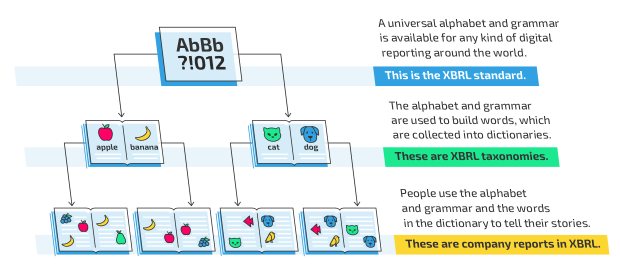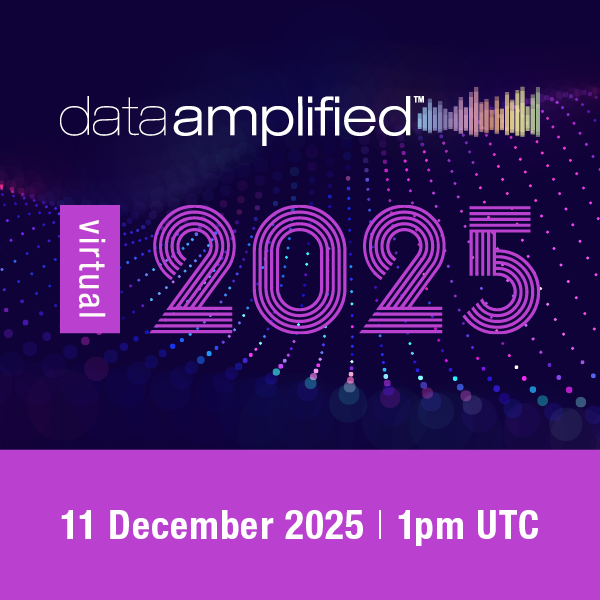
XBRL is the global standard for business data exchange. It makes reporting digital, and so makes data useful.
XBRL provides a flexible framework for almost any kind of digital reporting. It is used in diverse reporting requirements, for all types of data, enabling business information to flow around the world.
XBRL: the alphabet and grammar
XBRL is like a single, universal alphabet and grammar for digital reporting. It’s a freely licensed, open international standard available to all.
In technical terms, this alphabet and grammar – the XBRL standard – is made up of a set of specifications.
The specifications are developed and maintained by XBRL International, a global-not-for-profit operating in the public interest, together with expert volunteers from all over the world. Software engineers use these specifications in products such as commercial XBRL software and regulatory data collection portals, ensuring that XBRL data is comparable, interoperable and accurate.
Taxonomies: the dictionaries
The basic alphabet and grammar can be built up into words with a diverse range of meanings. These words can be collected into shared dictionaries, with the distinctive vocabularies different communities need.
In our analogy, the words are reporting concepts. The dictionaries are different XBRL taxonomies.
Taxonomies provide authoritative digital definitions for reporting concepts. Taxonomies are usually created and maintained by national and international standards setters and regulators, or other organisations that need to collect information. They are a way to capture a set of reporting rules in standard digital form, ensuring that everyone reporting digitally under those rules does so in a consistent way.
The concepts being defined in a taxonomy, and the business data being reported, can be of any type. XBRL is the gold standard for financial, sustainability reporting and prudential reporting, and is also used for tax returns, energy utility data, commercial property values, municipal reporting, and a host of other cutting-edge applications.
Reports: the stories
Now that our language has an alphabet, grammar, words and dictionaries, we’re ready to tell an infinite variety of unique stories.
These stories are digital corporate reports, meeting diverse reporting requirements around the world and potentially capturing any aspect of business activity.
Companies use the XBRL specifications and taxonomies to produce digital reports, either via specialised software or through simple templates provided by regulators. Management is able to tell the story of company performance directly to users, and users get that data in an accurate, consistent and comparable way – ultimately making it decision-useful. XBRL data flows readily along the information value chain from companies to regulators to analysts and investors. Because the information is digital, it can easily be discovered and analysed with software. It also provides high-quality input for AI models, eliminating AI guesswork and enabling deeper insights.
XBRL is currently in use in almost 220 reporting mandates and voluntary implementations in 65 countries – a number that is growing rapidly as corporate reporting continues to evolve.
How and what: a note on standards!
XBRL is the international digital reporting standard – and a comprehensive set of tools – for how to report business information. It does not prescribe what information should be reported, and indeed can be applied to almost any kind of business data.
There is sometimes cause for confusion, since we also talk about reporting standards to mean the requirements determined by standards setters on what information can be reported – for example, the international IFRS Accounting Standards, the European Sustainability Reporting Standards (ESRS), or Japanese GAAP. These rules about what should be reported are captured in a standard digital form in shared XBRL taxonomies, which define concepts such as profit or emissions in digital terms.
We strongly encourage the growing tendency for standards setters to take a digital-first approach, whereby they consider how data will be reported at the same time as they develop requirements about what to report, and build in XBRL definitions from the start.






